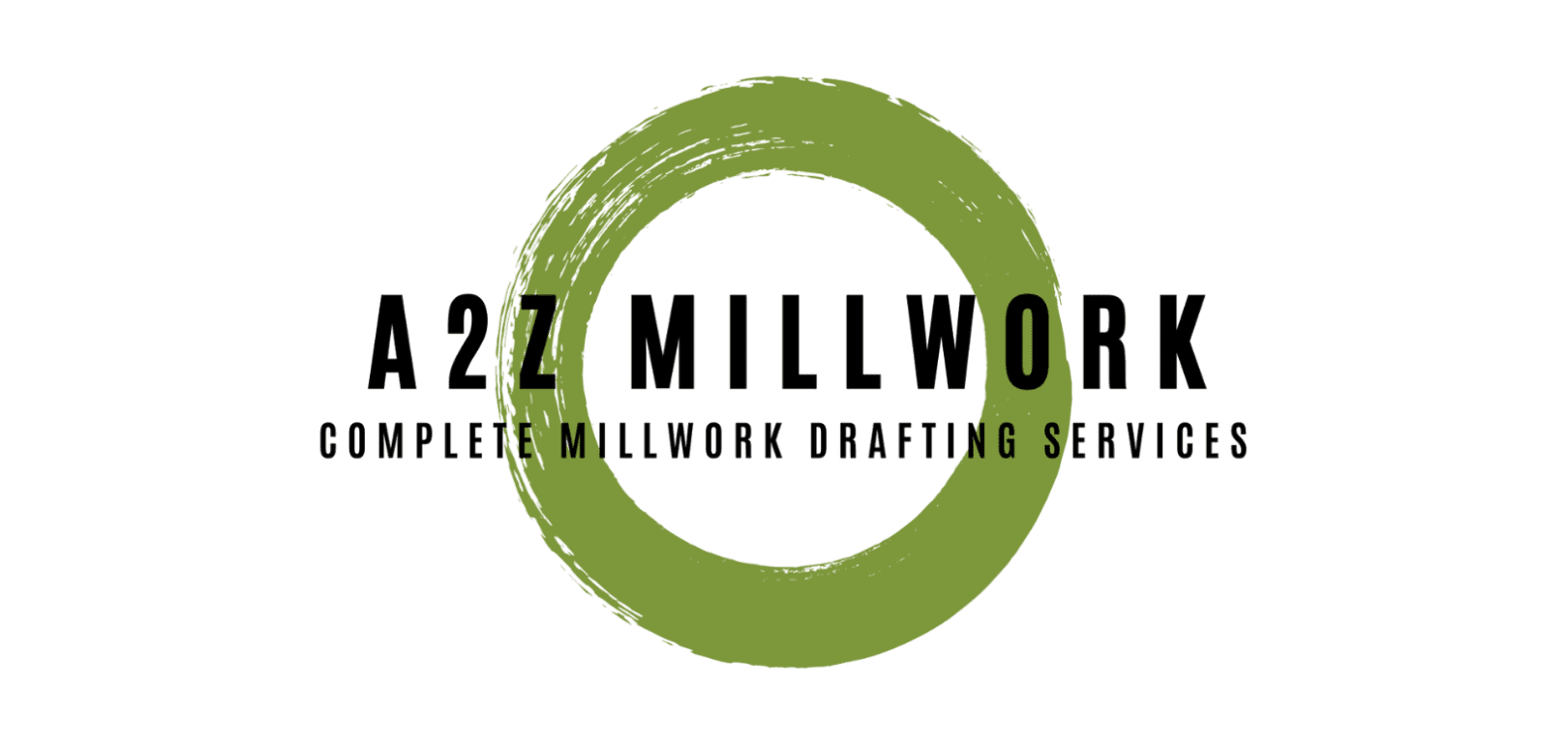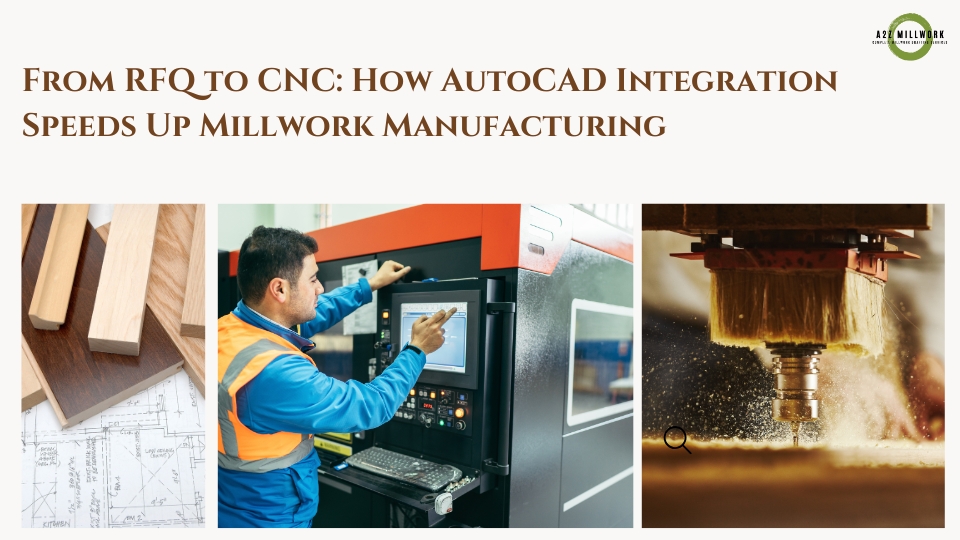In the modern U.S. millwork industry, speed isn’t just a competitive advantage—it’s survival. Whether bidding for a new commercial project in California or fabricating custom cabinetry for a Seattle client, manufacturers face immense pressure to shorten turnaround times while maintaining precision. And at the heart of this transformation? AutoCAD integration—the bridge that connects design intent, estimation, and RFQ to CNC production in a seamless digital flow.
Let’s explore how From RFQ to CNC integration is helping West Coast millwork manufacturers cut lead times, reduce errors, and deliver projects faster than ever before.
The Old Bottleneck: RFQs, Drawings, and Data Silos
Before CAD integration became the norm, millwork shops had to juggle multiple disconnected workflows:
- RFQs (Request for Quotes) arrived with incomplete details or general sketches.
- Engineers had to manually draft layouts and extract measurements.
- Estimators built material take-offs using spreadsheets or outdated templates.
- CNC operators manually reinterpreted those drawings for production.
Each handoff increased the risk of errors, delays, and rework—and in a market where bids are tight, a few missed hours could cost thousands in lost profit.
In short, the industry had precision tools but no unified workflow.
The Shift to Integrated AutoCAD Workflows
The game changed when millwork firms began using AutoCAD-based environments integrated with estimation, drafting, and CNC modules.
AutoCAD is no longer just a drawing tool—it’s a central hub that connects:
- Design engineers who visualize shop drawings.
- Estimators who generate automated BOMs and take-offs.
- Production teams who receive CNC-ready files without translation.
This integration has become the backbone of West Coast millwork innovation, enabling shops from Los Angeles to Portland to turn RFQs into production orders faster than ever.
Step-by-Step: How Integration Accelerates the Process
Let’s break down how AutoCAD integration optimizes each stage from RFQ to CNC.
1. RFQ to CNC & Initial Estimation
When an RFQ arrives, engineers can open design templates directly in AutoCAD. Using integrated plugins or millwork libraries, they can:
- Input dimensions and materials.
- Generate automated Bill of Materials (BOM) and cost estimates.
- Simulate material yield and waste factors.
This means faster, more accurate quoting—often within hours instead of days.
2. Drafting & Detailing
Once the bid is approved, the same AutoCAD model becomes the foundation for shop drawings. Designers can create:
- Plan, elevation, and section views.
- Joinery and hardware callouts.
- Parametric updates (so a design change automatically reflects across views).
West Coast firms often integrate Cabinet Vision or Microvellum modules within AutoCAD, linking design directly with the shop floor data.
3. BOM & Take-Off Automation
AutoCAD’s integration with millwork-specific databases allows instant generation of:
- Material quantity take-offs.
- Hardware lists.
- Edgebanding and veneer details.
Instead of manually calculating each part, estimators receive error-free BOMs tied directly to the geometry of the model.
A 2024 survey by Woodworking Network found that U.S. manufacturers using CAD-based automation reduced estimation time by up to 45%, allowing them to handle more RFQs per quarter.
4. CNC Conversion & Nesting
Here’s where integration pays off most. Once drawings are approved, they can be exported to CNC software with no reformatting or manual input.
Each part carries metadata like:
- Grain direction
- Material type
- Label IDs
- Cutting order
This ensures perfect nesting optimization and minimal machine downtime. In West Coast operations, firms report saving up to 18–22 labor hours per project simply by reducing machine setup errors.
🚀 Quantifying the Results
Here’s how AutoCAD-integrated workflows stack up against traditional setups in U.S. millwork manufacturing:
🔹 RFQ Turnaround:
From 2–3 days ➜ Now just 4–6 hours
🔹 Shop Drawing Preparation:
From 16–20 hours ➜ Reduced to 6–8 hours
🔹 CNC Programming:
From 6 hours ➜ Now 1–2 hours
🔹 Error Rate:
From 8–10% ➜ Less than 2%
🔹 Material Waste:
From 12% ➜ Down to 4–5%
This isn’t just a productivity improvement—it’s a direct boost to profitability. Every hour saved means more bids processed, faster project delivery, and fewer late-night reworks.
Case Insight: How Integration Prevents Rework
Consider a commercial casework manufacturer in San Diego. Before AutoCAD integration, a typical hospital cabinetry project took 3–4 weeks for RFQ to production. Miscommunication between design and fabrication often led to two or more revisions per project.
After implementing AutoCAD-based nesting and BOM automation, the company reduced their cycle to just 10 working days—with less than 1% rework.
Their project manager summed it up perfectly:
“AutoCAD integration made our drawings the language of production—not just design.”
The ROI of CAD Integration
A 2025 AIA technology insight report estimated that millwork firms using integrated CAD-to-CNC workflows increase annual throughput by 25–30% without adding headcount.
Key ROI factors include:
✅ Faster quotation responses.
✅ Reduced rework and scrap.
✅ Streamlined vendor communication.
✅ Higher CNC utilization rates.
With these efficiencies, firms can take on more complex, higher-margin projects—a critical differentiator in the competitive U.S. commercial market.
Final Word: A2Z Millwork Design’s Role
At A2Z Millwork Design LLC, we help manufacturers across the U.S. transition from manual drafting to fully integrated AutoCAD workflows.
Our AutoCAD-based millwork and cabinetry shop drawings are designed with CNC readiness, BOM automation, and production clarity in mind—helping shops eliminate translation errors and accelerate project delivery.
Whether you’re processing RFQs or programming CNC machines, A2Z ensures your drawings aren’t just accurate—they’re actionable.






